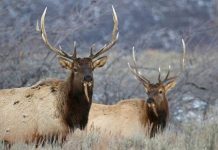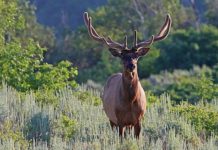SALT LAKE CITY, Utah, July 26, 2024 (Gephardt Daily) — Wildlife officials are asking landowners to consider fencing options that don’t kill wildlife.
“Do you have a wildlife-friendly fence?” the Utah Division of Wildlife Resources asked in a news release issued Friday.
“Sadly, our staff respond to many calls to remove wildlife fatally snagged by barbed wire fences or impaled on wrought iron decorative fences.”
Some of the impacts of fencing choices are observable, the DWR said, “such as a deer impaled and hanging from a wrought iron fence in a backyard garden.
“Or the suffering and eventual death of a deer that gets a hoof caught in a loose top wire of a barbed-wire fence.
“Even when animals free themselves from fences, there’s an increased risk of dying from infected cuts and wounds they incidentally receive while struggling to get out. Young fawns can perish from starvation when they can’t follow their mother to a seasonal range due to a fence barrier.”
There are many fencing options available to meet the needs of landowners while also keeping wildlife safety, health and movement in mind.
The DWR noted it will also provide fencing to landowners experiencing depredation from wildlife, which are state-owned. Learn more in the DWR’s latest blog post at this link.
The division release says studies have shown that the following fencing strategies adequately control livestock while also aiding wildlife movement:
- Allowing a 16-inch bottom wire gap from the ground allows fawns to crawl under a fence.
- Placing a taut, smooth top wire at a maximum of 42 inches (or more preferable, 38–40 inches) height allows wildlife to jump over the top of a fence with fewer injuries and less risk of hoof or leg entanglement.
- Allowing for a 12-inch gap between the top and second wire gives enough spacing to minimize the two wires tangling a hoof or leg.
- More detailed wildlife-friendly fence specifications for working lands are described in this Natural Resources Conservation Service technical note.
- To decrease bird collisions, place high visibility fence markers, flagging or a smooth PVC covered top rail on the fence.
- Fence markers can reduce collisions for sage-grouse by over 80% and are a simple yet effective tool.





